What is On-Page SEO and Why is it Important?

On-Page SEO refers to a set of actions you take within your website to improve its ranking in search engines like Google.
These actions include content optimization, using appropriate keywords, improving site structure, and increasing page loading speed.
Unlike Off-Page SEO, which focuses on link building and site authority outside the website, On-Page SEO directly affects elements you control.
The importance of On-Page SEO is that it helps search engines better understand your site’s content and display it to relevant users.
Without proper optimization, even the best content might not be visible in search results.
Imagine you have a large library.
On-Page SEO is like organizing shelves, labeling books, and writing a precise table of contents.
This helps visitors (search engines) quickly find the book (content) they are looking for.
Optimizing #page_titles, #meta_descriptions, and correctly using #heading_tags (#H1, #H2, etc.) are among the most important aspects of On-Page SEO.
A website with strong On-Page SEO not only achieves a better ranking in search results but also provides a better user experience, leading to increased visits, conversion rates, and ultimately business success.
Simply put, On-Page SEO is the foundation of a successful SEO strategy.
By understanding and correctly implementing On-Page SEO techniques, you can ensure that your website is optimized to be seen by your target audience.
Ultimately, On-Page SEO is not just a tactic, but a comprehensive approach to creating and managing a website that is appealing to both search engines and users.
By focusing on providing high-quality content, logical structure, and an excellent user experience, you can improve your site’s ranking, attract more traffic, and achieve your business goals.
Remember, On-Page SEO is an ongoing process and requires updates and adaptation to changes in search engine algorithms.
Losing potential customers due to an unprofessional website? Rasaweb is your answer! With our specialized corporate website design services:
✅ Enhance your business’s credibility and standing
✅ Experience attracting more targeted customers
⚡ Act now for a free consultation!
Keyword Research: The Fundamental Basis of On-Page SEO
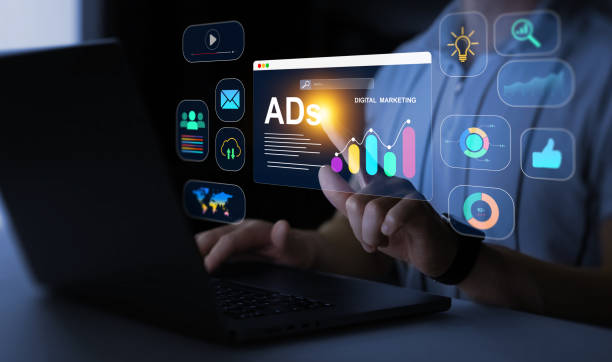
Keyword research is the process of identifying words and phrases that users enter into search engines to find information, products, or services related to your business.
This process is the fundamental basis of On-Page SEO because it helps you tailor your content to the needs and interests of your target audience.
Without proper keyword research, your On-Page SEO efforts may be fruitless.
Numerous tools are available for keyword research, including Ahrefs, SEMrush, Google Keyword Planner, and Ubersuggest.
These tools allow you to find search volume, competition levels, and related keywords.
When choosing keywords, look for a combination of head keywords with high search volume and long-tail keywords with less competition.
Head keywords are generally broad and generic, while long-tail keywords are more specific and precise.
For example, instead of using the keyword “shoes”, you can use the phrase “buy men’s running shoes”.
This helps you attract more targeted traffic and increase your conversion rate.
After identifying suitable keywords, you should strategically use them in your content.
This includes using keywords in page titles, meta descriptions, heading tags, main text, image file names, and URL addresses.
However, it is important to avoid keyword stuffing, as this can lead to penalties for your site from search engines.
Instead, try to incorporate keywords naturally and smoothly into your content, focusing on providing valuable and relevant information to users.
Finally, keyword research is an ongoing process.
You should regularly review and update your keywords to keep pace with changes in user search behavior and search engine algorithms.
By tracking your keyword performance and analyzing the results, you can improve your On-Page SEO strategy and increase your site’s ranking in search results.
Content Optimization: The Beating Heart of On-Page SEO

Content optimization is the process of creating and improving website content to attract more organic traffic from search engines.
This includes creating high-quality, relevant, and engaging content for your target audience, as well as optimizing it for desired keywords.
High-quality content is the beating heart of On-Page SEO, as search engines aim to provide the best and most relevant results to their users.
Your content should be original, valuable, and unique.
Avoid copying content from others, as this can lead to penalties for your site from search engines.
Instead, try to create content that offers a new perspective, answers user questions, and solves their problems.
Your content should be regularly updated to remain fresh and relevant.
Adding images, videos, and infographics can increase the visual appeal of your content and keep users on your site longer.
In addition to creating quality content, you must also optimize it for your target keywords.
This includes using keywords in page titles, meta descriptions, heading tags, main text, image file names, and URL addresses.
However, it is important to avoid keyword stuffing, as this can lead to penalties for your site from search engines.
Instead, try to incorporate keywords naturally and smoothly into your content, focusing on providing valuable and relevant information to users.
Optimize your content for readability as well.
Use short and simple sentences, keep paragraphs brief, and use heading tags to organize your content.
Use images and white space to break up the text and make it easier to read.
Your content should also be optimized for mobile devices, as many users now access the internet via smartphones and tablets.
Finally, content optimization is an ongoing process.
You should regularly review and update your content to keep pace with changes in user search behavior and search engine algorithms.
By tracking your content performance and analyzing the results, you can improve your On-Page SEO strategy and increase your site’s ranking in search results.
| Element | Importance | Description |
|---|---|---|
| Page Title | Very High | Must include the main keyword and be attractive. |
| Meta Description | High | An attractive summary of the page content that encourages users to click. |
| Heading Tags (H1-H6) | High | Used for structuring content and highlighting keywords. |
| Main Text | Very High | Must be high-quality, relevant, and optimized for keywords. |
Optimizing Site Structure and Information Architecture
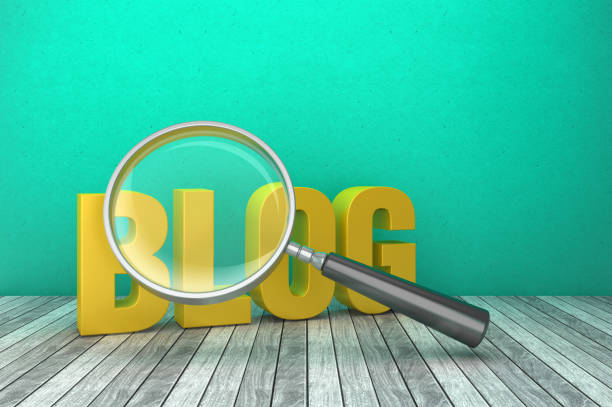
Site structure and information architecture play an important role in On-Page SEO.
A good site structure helps search engines easily find and index your content, and also provides a better user experience for visitors.
A proper information architecture logically organizes your content and helps users quickly find the information they are looking for.
Try to create a flat site structure, so that every page on your site is accessible from the homepage with the fewest number of clicks.
This helps search engines easily find and index all your site’s pages.
Use clear and concise navigation menus and ensure that users can easily move around your site.
Creating a sitemap helps search engines better understand your site’s structure and index all your pages.
Use descriptive and optimized URLs.
Your URLs should be short, relevant to the page’s content, and include target keywords.
Avoid using long and complex URLs that include meaningless numbers and letters.
Use categories and tags to organize your content.
This helps users easily find related content and also helps search engines understand the main topics of your site.
Use internal links to connect different pages of your site.
This helps search engines better understand your site’s structure and also helps users find related content.
When internal linking, use descriptive anchor text relevant to the content of the destination page.
Avoid linking to unrelated pages, as this can disrupt the user experience.
Finally, regularly review and update your site structure and information architecture to keep pace with changes in site content and user needs.
By tracking your site’s performance and analyzing user behavior, you can identify and address weaknesses in your site’s structure.
Does your current corporate website present a worthy image of your brand and attract new customers?
If not, turn this challenge into an opportunity with Rasaweb’s professional corporate website design services.
✅ Significantly improve your brand’s credibility and image.
✅ Pave the way for attracting new leads and customers.
⚡ Contact Rasaweb now for a free and specialized consultation!
Image Optimization: Increasing Speed and SEO
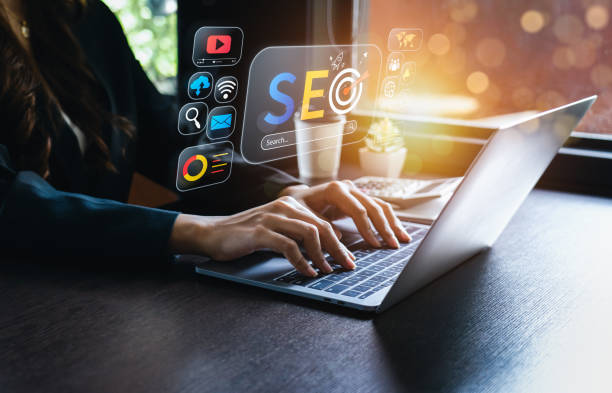
Image optimization is an important aspect of On-Page SEO that is often overlooked.
Optimized images can increase your page loading speed, improve user experience, and boost your site’s ranking in search results.
Large and high-resolution images can significantly slow down your page loading speed.
Before uploading images to your site, compress them to reduce their file size.
Numerous online tools and image editing software are available for image compression.
Use appropriate image formats.
JPEG format is better for images with many colors, and PNG format is more suitable for graphics and text.
WebP format is a newer format that offers better quality with a smaller file size.
Use descriptive file names for your images.
Your file names should be relevant to the image content and include target keywords.
Avoid using generic file names like “IMG_1234.jpg”.
Use Alt tags for your images.
An Alt tag is text displayed if an image cannot be loaded, and it also helps search engines understand the image content.
Your Alt tag should be descriptive, relevant to the image content, and include target keywords.
Optimize your images for mobile devices as well.
Your images should automatically adapt to the screen size of the user’s device.
Use lazy loading techniques for images.
Lazy loading means that images are only loaded when they become visible to the user.
This can significantly increase your page loading speed.
Finally, image optimization is an ongoing process.
You should regularly review and update your images to keep pace with changes in site content and user needs.
By tracking your image performance and analyzing the results, you can improve your On-Page SEO strategy and increase your site’s ranking in search results.
Mobile Optimization: A Necessity for On-Page SEO

With the increasing use of smartphones to access the internet, mobile optimization has become a necessity for On-Page SEO.
Google has officially announced that websites not optimized for mobile devices will rank lower in search results.
Your site should be responsive, meaning its layout and content automatically adapt to the screen size of the user’s device.
Use a simple and user-friendly design that is easily viewable and usable on mobile devices.
Use large and readable fonts and ensure that buttons and links are large enough to be easily tappable with a finger.
Your page loading speed should be high on mobile devices.
Use image compression, reduce the size of CSS and JavaScript files, and utilize caching to improve loading speed.
Avoid intrusive advertisements and pop-ups on mobile devices, as this can disrupt the user experience.
Use AMP (Accelerated Mobile Pages) to create faster and lighter versions of your pages.
AMP is an open-source project supported by Google that helps you significantly increase the loading speed of your pages on mobile devices.
Ensure your site is optimized for touch.
Buttons and links should be large enough to be easily tappable with a finger, and there should be sufficient space between tappable elements to prevent accidental clicks.
Test your site on various mobile devices to ensure it functions correctly and provides a good user experience.
Finally, mobile optimization is an ongoing process.
You should regularly review and update your site to keep pace with changes in mobile devices and user behavior.
By tracking your site’s performance on mobile devices and analyzing the results, you can improve your On-Page SEO strategy and increase your site’s ranking in search results.
Internal Linking: A Way to Improve Ranking

Internal linking is the process of creating links between different pages of your website.
This helps search engines better understand your site’s structure, find related pages, and distribute link value across your entire site.
Internal links can also improve user experience and keep users on your site longer.
When creating internal links, use descriptive anchor text relevant to the content of the destination page.
Your anchor text should accurately reflect the topic of the destination page and encourage users to click on the link.
Avoid using generic anchor text like “click here”.
Link to important pages on your site.
Pages you want to rank higher in search results should receive links from other pages on your site.
Avoid excessive linking to a single page.
Over-linking can lead to a decrease in link value and even penalties for your site from search engines.
Regularly review and update your internal links.
Ensure that all links are working correctly and lead to valid and relevant pages.
Use link checking tools to find broken links and links that lead to irrelevant pages.
Avoid linking to deleted or redirected pages.
This can disrupt the user experience and lower your site’s ranking in search results.
Use internal links to guide users toward your conversion pages.
Conversion pages are pages where you want users to take a specific action, such as purchasing a product, subscribing to a newsletter, or contacting you.
By creating internal links to these pages, you can direct more traffic to them and increase your conversion rate.
Remember, internal linking is an ongoing process.
You should regularly review and update your internal link structure to keep pace with changes in site content and user needs.
By tracking your internal link performance and analyzing the results, you can improve your On-Page SEO strategy and increase your site’s ranking in search results.
URL Optimization: Structure and Keywords

URL optimization is an important aspect of On-Page SEO that is often overlooked.
Optimized URLs can help search engines better understand your page’s content, improve user experience, and boost your site’s ranking in search results.
Your URLs should be short, descriptive, and relevant to the page’s content.
Avoid using long and complex URLs that include meaningless numbers and letters.
Your URLs should include target keywords.
This helps search engines understand the main topic of your page.
Avoid using too many keywords in your URL.
Excessive use of keywords can lead to penalties for your site from search engines.
Use hyphens (-) instead of underscores (_) to separate words in URLs.
Google recognizes hyphens as word separators, while underscores are treated as a single word.
Use lowercase letters in your URLs.
Using both uppercase and lowercase letters can lead to duplicate URLs and create problems for search engines.
Use static URLs instead of dynamic URLs.
Static URLs are typically shorter, simpler, and easier for search engines to understand.
Dynamic URLs usually contain many parameters that can make them difficult for search engines to comprehend.
Avoid changing your page URLs after they have been indexed by search engines.
Changing URLs can lead to 404 errors and decrease your site’s ranking in search results.
If you must change a page’s URL, use a 301 redirect to guide users and search engines to the new URL.
Finally, URL optimization is an ongoing process.
You should regularly review and update your page URLs to keep pace with changes in site content and user needs.
By tracking your URL performance and analyzing the results, you can improve your On-Page SEO strategy and increase your site’s ranking in search results.
| Feature | Description | Example |
|---|---|---|
| Short and Concise | The URL should be as short as possible. | example.com/seo-internal |
| Use of Keywords | Should include the main keyword of the page. | example.com/on-page-seo-guide |
| Separation with Hyphens | Hyphens should be used to separate words. | example.com/on-page-seo-optimization |
| Lowercase Letters | Always use lowercase letters. | example.com/seo-internal-tips |
Are you concerned about your e-commerce site’s low conversion rate and not achieving your desired sales?
Rasaweb is your specialized solution for having a successful e-commerce website.
✅ Significant increase in conversion rates and sales
✅ Professional and user-friendly design to gain customer satisfaction
⚡ Ready for a transformation in online sales? Get a free consultation!
Heading Tags (H1-H6): Structuring and SEO
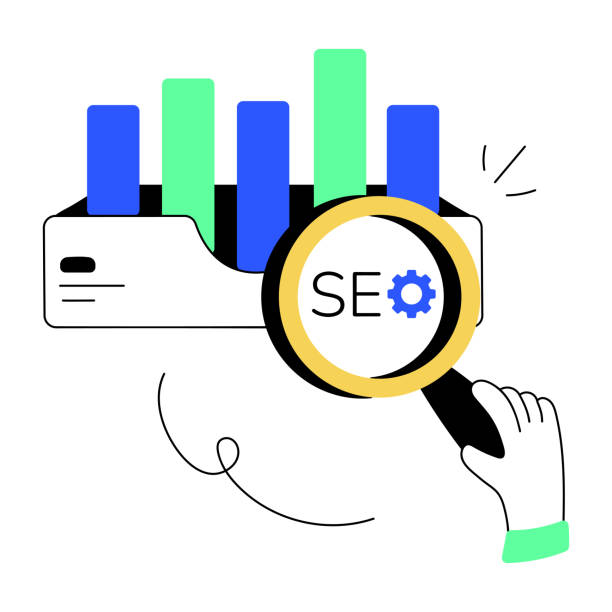
Heading tags (H1-H6) are used for structuring page content and highlighting titles and subtitles.
These tags play a significant role in On-Page SEO because they help search engines understand the content hierarchy of the page and identify its most important sections.
The H1 tag should specify the main title of the page and be used only once per page.
Your H1 tag should be descriptive, engaging, and include the main keyword of the page.
Use H2-H6 tags to structure subtitles and different sections of the page.
H2-H6 tags should have a logical hierarchy and divide the page content into smaller, more understandable sections.
Your heading tags should be relevant to the page content and accurately reflect the topic of each section.
Avoid using irrelevant heading tags, as this can disrupt the user experience.
Your heading tags should be naturally and smoothly integrated into the page content.
Avoid using heading tags solely for SEO purposes.
Your heading tags should help users quickly and easily understand the page content.
Avoid using duplicate heading tags.
Each heading tag should be unique and reflect different content.
Optimize your heading tags for target keywords.
However, it is important to avoid excessive keyword use, as this can lead to penalties for your site from search engines.
Regularly review and update your heading tags.
Ensure that your heading tags are correctly structured and accurately reflect the page content.
By tracking your heading tag performance and analyzing the results, you can improve your On-Page SEO strategy and increase your site’s ranking in search results.
Site Speed: A Key Factor in Ranking and User Experience
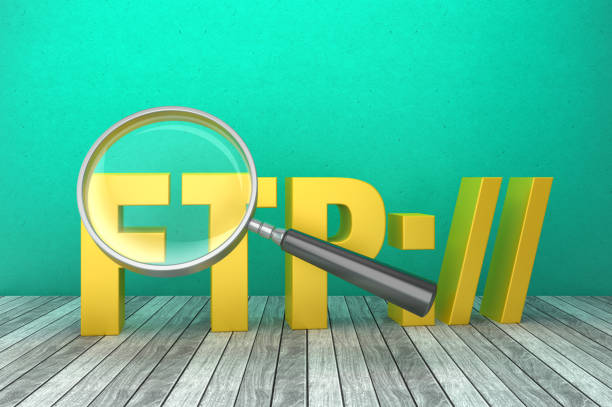
Site speed is one of the key factors in ranking and user experience.
Users expect web pages to load quickly, and slow websites typically have a higher bounce rate and achieve lower rankings in search results.
Use site speed testing tools like Google PageSpeed Insights and GTmetrix to identify your site’s speed issues.
These tools help you identify your site’s weaknesses and provide solutions to improve its speed.
Compress your images to reduce their file size.
Use optimized image formats like WebP and optimize your images for different devices.
Use caching to store static versions of your pages.
This helps browsers load pages faster and reduces server load.
Minify your CSS and JavaScript files to reduce their size.
This helps browsers download and process files faster.
Use a Content Delivery Network (CDN) to distribute your site’s content across various servers worldwide.
This helps users download your site’s content from the nearest server and increases loading speed.
Optimize your site’s code and avoid using unnecessary code.
Clean and efficient code can significantly improve your site’s speed.
Use a high-quality and fast hosting provider.
A poor hosting provider can significantly reduce your site’s speed.
Regularly review and optimize your site speed.
Changes on your site can affect its speed, so it’s important to regularly check your site’s speed and optimize it as needed.
By improving your site’s speed, you can enhance user experience, reduce bounce rate, and increase your site’s ranking in search results.
All these factors significantly contribute to strengthening On-Page SEO.
Frequently Asked Questions
| Question | Answer |
|---|---|
| What is On-Page SEO? | Refers to the set of actions taken within a website to improve its ranking in search engines. |
| Why is On-Page SEO important? | Because it helps search engines better understand your site’s content and structure, and improves user experience. |
| What are the most important elements of On-Page SEO? | Title and meta descriptions, keywords, URL structure, quality content, image optimization, internal linking, and site speed. |
| How to optimize Title Tag and Meta Description? | The title should include the main keyword and be appealing, and the meta description should be a compelling summary of the content with relevant keywords. |
| What is the role of keywords in On-Page SEO? | Keywords inform search engines about the page’s content and should be used naturally and intelligently within the text. |
| How is image optimization done for On-Page SEO? | By compressing file size, using descriptive file names, and filling Alt tags with relevant descriptions and keywords. |
| What is Internal Linking and what is its use? | It is connecting different pages of a website to each other. This helps distribute Page Authority and improves search engine crawling. |
| What is the importance of site loading speed in On-Page SEO? | High speed improves user experience and is one of the important ranking factors for search engines like Google. |
| What is the impact of site responsiveness (Mobile-Friendliness) on On-Page SEO? | Given the increase in mobile users, responsiveness is essential for providing a suitable user experience across all devices and for Google’s mobile-first indexing priority. |
| What are the important content-related factors in On-Page SEO? | Originality, quality, comprehensiveness, readability, proper use of headings (H1, H2, …), and regular content updates. |
And other services of Rasa Web Advertising Agency in the field of advertising
- Smart Advertising Campaign: A creative platform to improve customer acquisition by customizing user experience.
- Smart Marketplace: Professional optimization for digital branding using real data.
- Smart Website Development: An effective tool for analyzing customer behavior with the help of Google Ads management.
- Smart Website Development: A dedicated service for growth in increasing click-through rates based on the use of real data.
- Smart Direct Marketing: A combination of creativity and technology for campaign management through optimizing key pages.
And over hundreds of other services in the field of internet advertising, advertising consulting, and organizational solutions
Internet Advertising | Advertising Strategy | Advertorial
Resources
Digikala Mag SEO Optimization Guide
On-Page SEO Training on Virgool
What is On-Page SEO and How is it Done?
What is On-Page SEO? Complete Guide to On-page SEO
? For your business to flourish in the digital world, Rasaweb Afarin is by your side with its unparalleled expertise. From personal website design to targeted marketing campaigns, we build your digital future.
📍 Tehran, Mirdamad Street, next to Bank Markazi, Kazeroun Jonoubi Alley, Ramin Alley No. 6


